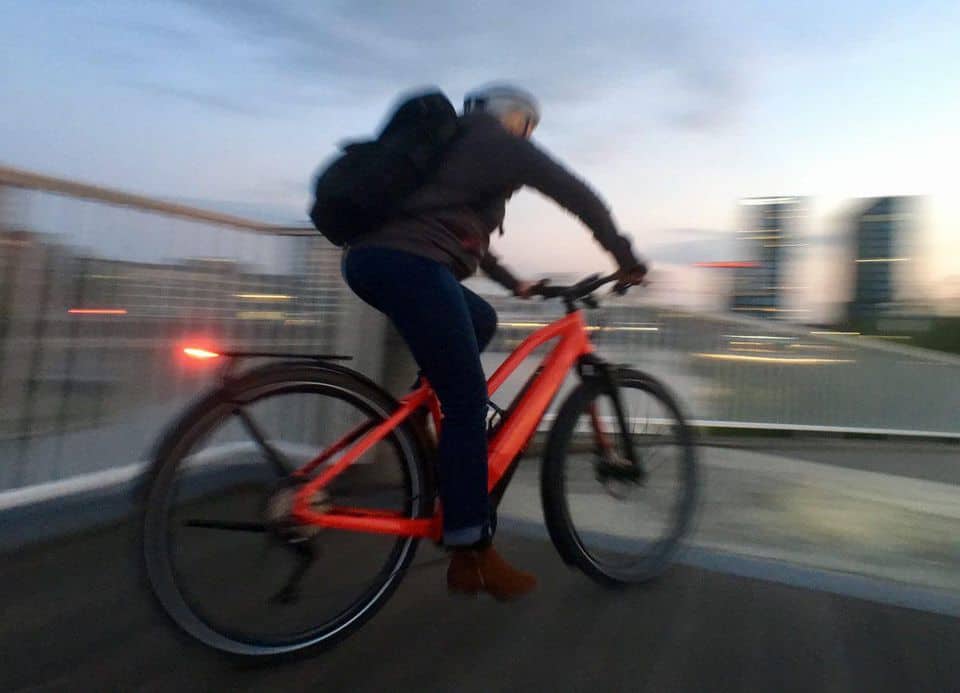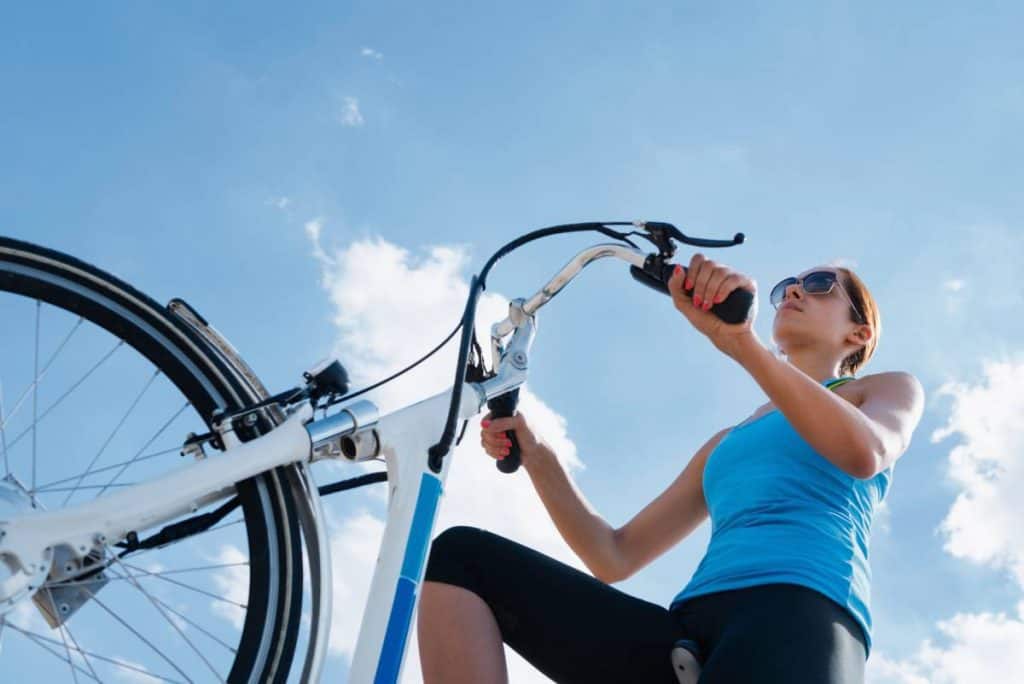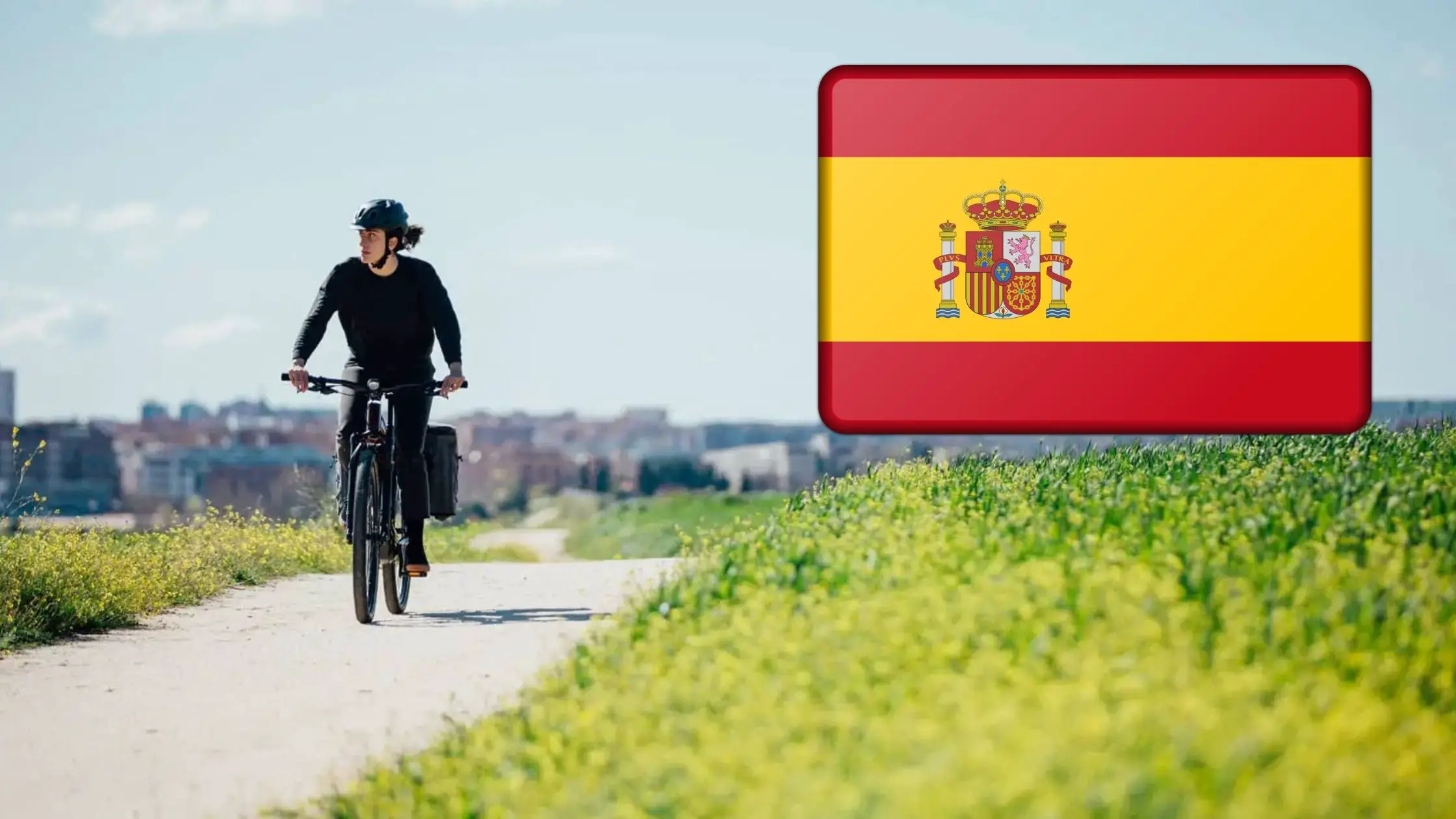Last Updated on January 9, 2023 by Igor Karni

This is probably one of the most asked questions in the e-biking community. Especially when we are starting off, we are told that e-bikes can go really fast, but that’s not true. Not at least in all the e-bikes available.
So, how fast can e-bikes go? E-bikes are usually restricted in the top speed they are allowed to assist you, normally 32 mp/h (51 km/h) in the US and 28 mp/h (45 km/h) in most of Europe. It will vary depending on the country you are living in, and the e-bike’ class.
Don’t worry though, you can go faster than that by pedaling. Most people will use e-bikes to support their ride going up hills, riding through the park, or even feel the adrenaline of going fast.
E-bikes classes were created to classify the motor, security, and capabilities of the e-bikes. People use e-bikes for many purposes and it’s valuable to know what kind of e-bike suits each person the best. It may be to going to a grocery store in the morning, the daily route to work, or even a funny and exhilarating day riding fast with friends. You need the best e-bike for each of the purposes.
Whether you are a complete beginner or an advanced e-biker, this is all you need to know in order to enjoy a memorable ride and end up buying the right e-bike for you. You will know each country’s regulations, as well as the exact amount of watts you need for your motor and all kind of details.
Let’s get into it…
Classes of electric bikes
If you didn’t know it, e-bikes belong to three classes. Respectively, class 1, class 2, and class 3. This system of classifying electric bikes has been adopted by several states and countries as a means of e-bikes’ regulation.
Let’s take a look at each one of these classes to find out the speed limit and most of their features:
- Class 1: These e-bikes are one of the most passive of them all. In fact, when you are taking a ride, they will only assist your pedaling but not your throttle. A class 1 e-bike will help you once you start pedaling. They will cease the assistance when you’ve reached 20 miles an hour.
- Class 2: They are known in the e-bike community as the ‘‘low-speed throttle-assisted electric bicycle’’. These e-bikes have motors that propel the rider entirely without pedaling. However, they are also limited at 20 mph. Still, you can reach higher speed by pedaling yourself with the motor off.
- Class 3: These e-bikes are a little bit more aerodynamic and faster. They are usually known as ‘‘speed pedal-assisted electric bicycle’’ and provide assistance just when the rider is pedaling. Class 3 e-bikes are limited to 32 mph and are usually equipped with a speedometer.
Read also: What are traditional e-bike and speed e-bike rules and regulations in the US, UK, Canada, Australia?
What about the laws?
Regulations may ruin all the fun and extreme part of everything, but they are essential for keeping everyone’s integrity and security. At least in the U.S, the consumer product safety act defines a ‘‘ low-speed electric bicycle’’ as a vehicle with fully operable pedals, with a motor of 750 W or below and a maximum speed of 20 mph.
So, an e-bike with a motor below 750 watts and with a maximum speed of 32 kilometers is free and safe to ride anywhere you would probably ride on a normal bike.

In Europe, things are a little bit different and safer compared to the United States. In this sense, most of the European countries limited their e-bikes shutting down their engines at a maximum speed of 25 km/h. Even though some countries like Denmark are starting to approve superbikes that reach speeds of up to 45 km/hour.
Another important aspect is that in Europe watts limitation is 250 watts, which is way lower than that in the United States’ act dictating 750 watts.
Now about the speed
How much the motor will assist you
When you’re buying or building your new e-bike, one of the most asked questions is: which electric bicycle power rating will suit me the best?
Especially when are looking at the specification, we always find the watts, voltage, and all kinds of confusing information. But, in reality, what do all of these means? Most people think that the higher the wattage, the faster their bicycle will be. However, this is far from the truth.
Easy Fact: The proper thinking is higher wattage means higher power, which is not translated directly into speed.
So, do you want to know how much the motor will assist you during your rides? Well, we need to evaluate your weight and whether you will be riding decent-size hills.
Not surprisingly, the heavier you are the more power you need to accelerate you along with the e-bike. The same happens with the hills you are trying to climb. If the hills are steeper and longer than normal, then you will need the higher wattage possible.
Read also: Front, mid-drive, or rear e-bike motor. Which one to choose? And, What is the difference between e-bike motors?
Let’s take the example of a woman weighing 50 kilos and planning on climbing really insignificant hills. Either her weight or her rides don’t need lots of power under the hood. In fact, with 250 watts that exact same woman would have all her needs suited.
Take another example, a woman who weighs 70 kilos and she wants to use her e-bike for riding really steeper and long hills. In that case, a 750 watts e-bike will do a better job for her!
Battery capacity and calculating e-bike range
Most of the modern e-bikes are powered by lithium-ion batteries. Watt-hours is one way for measuring the energy capacity of an e-bike. Therefore, we are going to use this method to find out what you need to expect from your new e-bike in terms of energy capacity.
Calculating watt-hours is really simple and quick. Don’t worry, you don’t need to be an expert on math. We need to multiply the voltage by the amp hours of the battery pack. Let’s suppose it’s a 36-volt and 10-ah battery pack, (36×10=360).

The result above means you will get up to 18 miles with your 360 watt-hour pack.
Watt-hours will determine the range your electric bike will go, the cost of your new e-bike, and the weight. Really important aspects you need to think about when buying an e-bike because you will need to sacrifice weight for power in some instances.
Read also: What is the difference between e-bike batteries? And, How far can e-bikes go? What is the e-bike range?
One quick example: 250 watts motors burn in general 250 watts hours in an hour and 20 minutes at full throttle, but with not very much electric assistance.
Another example: a 500-watt motor, which burns through the same pack at full throttle in less than 40 minutes. Of course, the amount of power assisting you while pedaling will be at least twice comparing it with the 250 watts motor.
Pedaling efforts
Depending on your purchase, you will need different pedaling efforts.
Classes will only dictate whether your electric bike will assist you when throttling or/and pedaling. The power explained above is what would make you feel assisted.
Class 1 doesn’t provide assistance while throttling, which means you will need to pedal at first to get your e-bike working and assisting you while pedaling. This class offers a passive assist that will accelerate you once you have started to pedal, so it’s not ‘‘completely automatic’’.
Class 2 offers probably the most dynamic setup of them all, as it can adjust to most of the needs. These e-bikes do assist you when throttling and pedaling from start to end. So, if you are looking for a full-assistance e-bike, then you need to buy a class 2 or class 3 e-bikes.
Read also: How to select the best e-bike for your needs? Making your educated e-bike selection choice – and also in this article. And, How much does a good e-bike cost? Comprehensive e-bike pricing guide (with 46 examples).
Classes 3 are a little bit different. Yes, they provide you with assistance while throttling and pedaling. But these e-bikes may be a little fast and wild for some people. They are limited in their speed, but normally its power is higher than other classes.
Do you want to have full assistance while riding your electric bike? Classes 2 or 3 are your way to go.
Do you want to have semi-assistance and still work out while riding your e-bike? Class 1 is your way to go.
Type of terrain
E-bikes have taken the bike’s market by storm because they are flexible and you can find a specific model for your needs. Whether it is for commuting, leisure or even to assist your mountain bike sessions, you have an e-bike for everything you need.
Rough trails: Mountain Bikes
Like any traditional bike in the market, you can even find an e-bike adapted and designed for mountains (MTB e-bikes). The addition of a powerful motor on a high-performance mountain bike may give all enthusiasts the adrenaline, assistance, and speed they need.
E-bikes help you to attack trails harder and faster. Plus you can practice or get another lap without getting worn out quickly.
Read also: How to select your first electric mountain bike? And, How much does a good eMTB e-bike cost?
These e-bikes are available as hardtails (front suspension) or full suspension. Hardtails are better on lighter trails and more affordable. The full suspension offers more versatility and allows you to tackle the rougher ground with ease.
Leisure and commuting: any e-bike
Most people just want their e-bikes for commuting to work, or even taking a ride during weekends. Whether you want one for your daily commute to work, to avoid getting sweaty and worn out, or just riding on the weekend with your family, an e-bike will make your life easier and assist you in every single pedal.

You will be provided with power and assistance even in the longest and steeper hills, but just if you’ve chosen the right amount of watts for your weight. Remember, write down how much you weigh and get an electric bike that suits your weight and uses the most.
Read also: How to select the best cruiser e-bike? And, How much does a good cruiser e-bike cost?
Related questions
How many charges can I get out of a battery? Most of the e-bikes you will find in the market are powered up by lithium-ion batteries. These are durable and reliable, supporting up to 500 charge cycles, after which the battery will hold up to 80% of the original charge.
One way to maximize your battery life is by simply combining both pedal power and electric power to reach at least 20,000 miles before changing your battery.
What is the distance traveled with a single charge? The answer will depend upon the use you are giving to your e-bike. Whether if you are pedaling all the time or using the throttle alone without pedaling.
Read also: How much does an e-bike weigh? And, What is e-bike range on a single charge?
A single charge can last up to 50 miles (80 kilometers) if you are supporting the motor with active pedaling. The range can decrease to 15-20 miles (30 kilometers) if you are using the maximum assistance level on your e-bike.
How fast can an e-bike go? Governments from all around the globe have limited the e-bikes speed to 28 mph and some of them even at 20 mph. Depending on where you are living, you can go either at a top speed of 28-20 mph while assisted. However, you can go way faster by pedaling, as fast as you are able to pedal.
Igor is a sustainable mobility and green energy advocate. His mission for Easy E-biking is to help make electric cycling simple, practical, and fun. Follow him on Facebook and LinkedIn.




